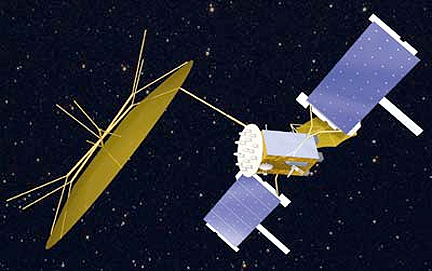
The Mobile User Objective System (MUOS) is an Ultra High Frequency (UHF) (300 MHz to 3 GHz frequency range) SATCOM system, primarily serving the DoD. The MUOS will replace the legacy UHF Follow-On (UFO) system before that system reaches its end of life to provide users with new capabilities and enhanced mobility, access, capacity, and quality of service. Intended primarily for mobile users (e.g. aerial and maritime platforms, ground vehicles, and dismounted soldiers), MUOS will extend users' voice, data, and video communications beyond their lines-of-sight.
...initial operational use, the Navy said on November 21st. MUOS is a next-generation narrowband tactical communications system designed to improve communications for U.S. forces on the move. The Naval Satellite Operations Center at Point Mugu, California, began controlling the spacecraft in June. The Navy is responsible for providing narrowband satellite communication for the Defense Department. U.S. Fleet Cyber Command is assigned to serve as the Navy Component Command to USSTRATCOM for space, cyberspace and information operations.
The MUOS constellation will comprise four satellites and an on-orbit spare. The system also includes four ground stations strategically located around the globe, which provide worldwide coverage and the ability to connect users wherever they are deployed. The ground system transports data, manages the worldwide network and controls the satellites.
MUOS is designed to allow warfighters to move around the battlespace while communicating and sending data at 10 times existing capacity. After the launch of the second satellite, projected for July of 2013, MUOS will provide military users simultaneous voice, video and data capability by leveraging 3G mobile communications technology. The MUOS constellation is expected to achieve full operational capability in 2015, extending narrowband availability well beyond 2025.

